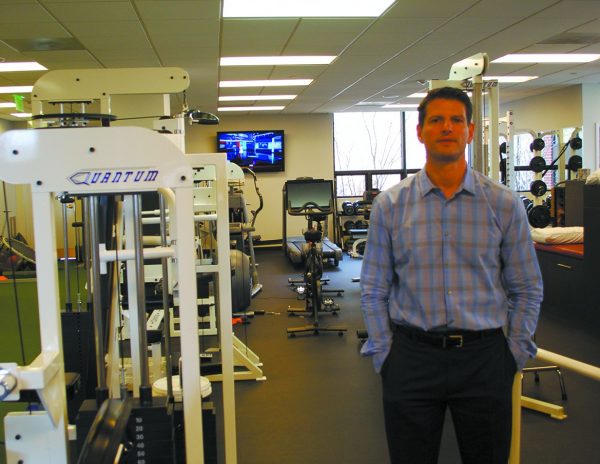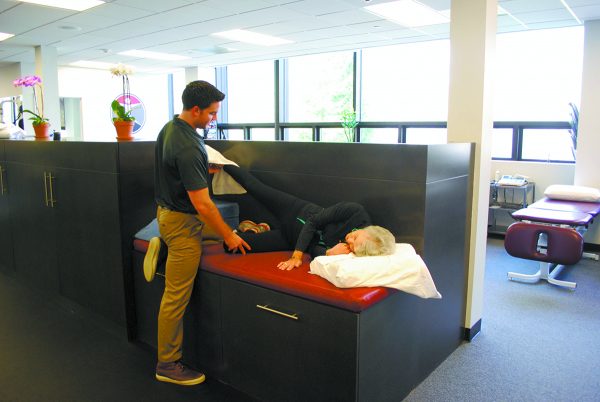When Grace Bennett, this magazine’s publisher, saw the last of her children leave for college, she found herself with a bit more time to commit to getting into shape. But the added time at the gym, along with weekly walks with a friend, weren’t leading to the results she envisioned.
“My regular workout wasn’t helping me keep the pounds at bay,” Bennett recalls. “I just wasn’t pushing myself very much, and I definitely wasn’t watching what I ate very well.”
Bennett’s problem is one many empty nesters, and others looking to jump into a training program, encounter after only months of working out, says Saw Mill Club Fitness Director Billy Goda.
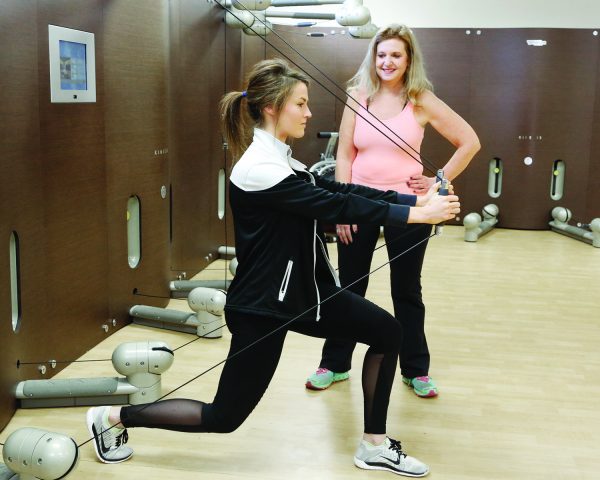
“People think that they just need to learn the best ten moves, do them two-to-three times a week, and they’re good,” Goda explains. “They’re looking for an easy solution. There’s not an easy solution or quick fix.” “Routine,” concludes Goda, “is the opposite of fitness.”
Looking to step up the intensity of her workouts, Bennett decided to hire a personal trainer. She had trained a few years ago, but for the sake of convenience and consistency, she wanted the personal trainer to also be inside the Saw Mill Club, where she had recently become a member. “I gave up on the idea again that I could do this by myself,” she says. Still, she now admits that she wasn’t exactly looking forward to being pushed to her limits. “I fully expected [the trainer] to be something of a taskmaster. I thought, ‘This is going to be really awful.’”
In her first meeting with her new trainer, Saw Mill Club’s Sarah Eichorn, Bennett realized her fears were unfounded. Eichorn pushed her to gradually up her intensity without going beyond what Bennett could comfortably handle.
“With her we circuited between getting her heart rate up, going to an upper body [workout], then a lower body,” Eichorn, a Mt. Kisco resident, explains. “As she learned these movements individually, we started putting them together.”
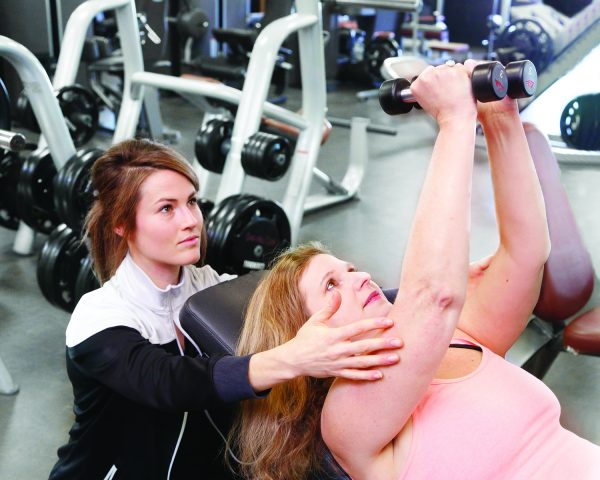
Soon, Eichorn saw great improvement. “I noticed a big change in her cardio, with the respiratory, with her heart rate,” Eichorn says. The two also developed a nice rapport and personal connection. “I feel very comfortable with Sarah; she is both low key and knowledgeable about fitness and health.”
Goda says Saw Mill Club gets many men and women in their 50s, like Bennett, who decide it’s time to get back into, or just into, shape.
“One thing that we stress is that what you’re going to do in your 50s,” Goda says, “that’s going to determine how you feel in your late 50s, your 60s, your 70s, and beyond.”
But while joining a gym is a good first step, there are many potential pitfalls that can derail one’s fitness program. Often, Goda says, people in their 50s join a gym and do the same simple workout every time, leading to some early but unsustainable progress.
“In the third month, when things aren’t going well, they disappear for a year,” Goda says. “What we try to do at the Saw Mill Club is we try to make sure people don’t just disappear.”
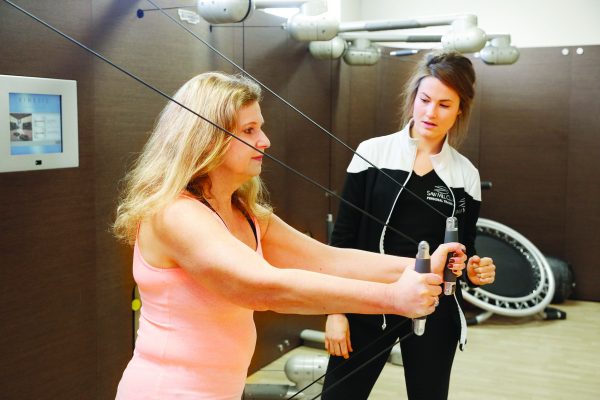
Goda gets the club’s clients to focus on the five major components of fitness: muscular strength, muscular endurance, flexibility, cardio health, and body composition. Trainers may have their clients start by improving their range of motion, then add weight to the movement, and then throw in a twisting motion.
Communication, Goda stressed, is essential so clients know what they are doing and why they are doing it. This will not only help them see quick results, but will better the chances that they continue to push forward six months to a year in the future.
Goda also points out that no one is too old to start training, and said that working out can alleviate problems like back pain.
“My oldest client is 92 years old,” Goda says. “I put him in all these different movement patterns, and he is pain free.”
When Bennett began her training, her focus was on the number she saw when she stepped on the scale. Eichorn convinced her that this approach was misguided, as losing weight and getting fit are not one and the same.
“People are telling me that I look better,” says Bennett. “I feel better in general from day to day. I feel like I have a little more energy. I’m coupling it with much better eating too.”
For info on membership and training packages, visit www.sawmillclub.com.
PHOTOS BY: Philip Holt/Mad Shots Photography
Andrew Vitelli is a Westchester native and the editor of Inside Armonk.

